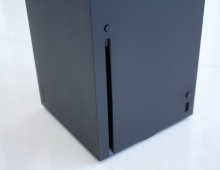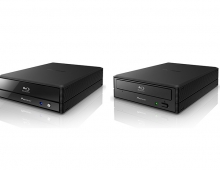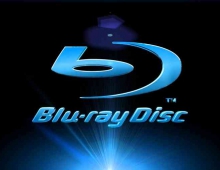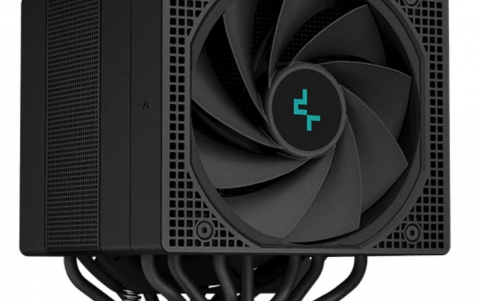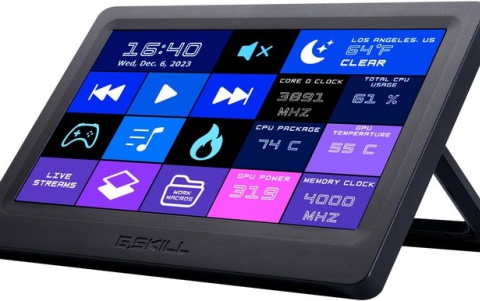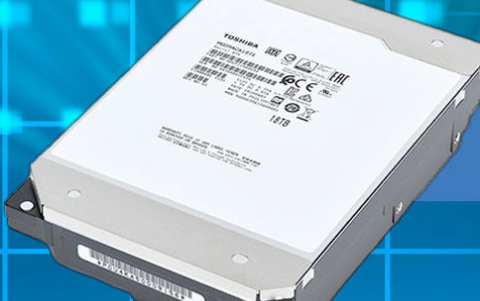
Talking About Interactivity of Blu-ray Titles
The interactivity offered by the Blu-ray Discs is considered a major value-add for the format, but hardware makers and the Blu-ray Disc Association have to work closer to educate consumers about these interactive features.
Along with the high-definition video signal provided by both high-definition formats (Blu-Ray / HD DVD), Sony and Toshiba promise to enhance consumers' entertainment experience by offering new features in their hardware for supporting functionalities such as the Picture-In-Picture (PIP) capability and several others based on the network connection of their players.
Toshiba moved faster here and was the first to offer the PIP features - a technology backed and powered by Microsoft's expertise in the .NET platform.
On the other hand, the Blu-Ray Disc Association gradually released the so-called BD-ROM Profiles, a set of hardware specifications that define the ability of a Blu-Ray player to support interactive features. BD's interactivity platform is based on the Java programming language. The ability of a player to play back certain BD-J features depends on the support of the relevant hardware profile.
Generally, the BD-ROM profiles include the hardware capabilities that must be supported by the conforming Blu-Ray players. These include internet (network) connectivity, the inclusion of a storage medium in hardware, the Virtual File System (VFS), the Picture-in-Picture (PiP) feature and the audio mixing capability (secondary audio).
The majority of the first generation of Blu-Ray players conformed to the BD-Video 1.0 (Profile 1) specifications. These specifications did not mandate the support of any of the aforementioned advanced features. This enabled hardware makers to introduce quickly the first BD players that offered the basic BD movie play back in the market. The BDA described the Profile 1 specs as a "grace period" for hardware makers, which expired in 31st of October. After this date, all hardware makers should make their players according to the BD-Video 1.0 (a.k.a. 1.1) Final Standard Profile, which mandates the support for Picture-in-Picture (PiP), Audio mixing (secondary audio), a 256 MB (built-in or removable) storage and Virtual File System (VFS) support.
The problem here is that although the early (Profile 1) BD players were supposed to be able to play back the current BD-J Blu-Ray movies, that hasn't been a seamless experience. BD discs with BD-J features such as the "Liar's Dice" game or "Pirates of the Caribbean" are notorious for taking as long as 2-3 minutes just to boot up on some standalone players, or even did not play at all at some others. However, a firmware update could fix these issues in some players, as long as they meet the basic hardware requirements.
So early adopters of the Blu-Ray technology may not be able to enjoy some of the interactive features of the Blu-Ray movies.
Starting from yesterday (Oct 31st), all BD players should conform to the BD-Video 1.0 (a.k.a. 1.1) Final Standard Profile. Panasonic has already announced the DMP-BD30 BD player that supports the Profile 1.1 specifications. LG is also expected to offer its LG's BH200 Super Blu player with a 1.1 support, while Samsung has delayed its third-generation BD players and thus it is not yet sure whether they will offer support for the new profile in the future.
The next step is the support for the BDA's "BD-Live" (Profile 2) specifications. These require hardware to support Internet/network connection, Picture-in-Picture (PiP), Audio mixing (secondary audio), 1 GB of storage and Virtual File System (VFS). Until now , no hardware maker has announced support for these features.
We should mention here that Blu-ray's rival technology HD DVD has been thus far more consistence to the consumers by offering, for example, the PIP features on HD DVD practically from the get-go, and all HD DVD branded players have been required to provide the secondary video and audio decoders (for real PIP support), as well as networking capability, since the format's introduction. HD DVD discs with web-enabled features began to appear last summer, and all of Toshiba's first-generation players can be firmware-updated to full compatibility with these new features.
In any case, the important point here is that many of the new Blu-ray players scheduled to appear on the market until the end of 2007 may not be able to play back any of the PIP features that will appear on Blu-ray Discs in the future. This interactivity might not the holy grail for video enthusiasts, but if for some it is, we would expect hardware makers to inform people willing to buy new players so that they would know in advance what these players are able to playback what not before making their purchasing decision.
Toshiba moved faster here and was the first to offer the PIP features - a technology backed and powered by Microsoft's expertise in the .NET platform.
On the other hand, the Blu-Ray Disc Association gradually released the so-called BD-ROM Profiles, a set of hardware specifications that define the ability of a Blu-Ray player to support interactive features. BD's interactivity platform is based on the Java programming language. The ability of a player to play back certain BD-J features depends on the support of the relevant hardware profile.
Generally, the BD-ROM profiles include the hardware capabilities that must be supported by the conforming Blu-Ray players. These include internet (network) connectivity, the inclusion of a storage medium in hardware, the Virtual File System (VFS), the Picture-in-Picture (PiP) feature and the audio mixing capability (secondary audio).
The majority of the first generation of Blu-Ray players conformed to the BD-Video 1.0 (Profile 1) specifications. These specifications did not mandate the support of any of the aforementioned advanced features. This enabled hardware makers to introduce quickly the first BD players that offered the basic BD movie play back in the market. The BDA described the Profile 1 specs as a "grace period" for hardware makers, which expired in 31st of October. After this date, all hardware makers should make their players according to the BD-Video 1.0 (a.k.a. 1.1) Final Standard Profile, which mandates the support for Picture-in-Picture (PiP), Audio mixing (secondary audio), a 256 MB (built-in or removable) storage and Virtual File System (VFS) support.
The problem here is that although the early (Profile 1) BD players were supposed to be able to play back the current BD-J Blu-Ray movies, that hasn't been a seamless experience. BD discs with BD-J features such as the "Liar's Dice" game or "Pirates of the Caribbean" are notorious for taking as long as 2-3 minutes just to boot up on some standalone players, or even did not play at all at some others. However, a firmware update could fix these issues in some players, as long as they meet the basic hardware requirements.
So early adopters of the Blu-Ray technology may not be able to enjoy some of the interactive features of the Blu-Ray movies.
Starting from yesterday (Oct 31st), all BD players should conform to the BD-Video 1.0 (a.k.a. 1.1) Final Standard Profile. Panasonic has already announced the DMP-BD30 BD player that supports the Profile 1.1 specifications. LG is also expected to offer its LG's BH200 Super Blu player with a 1.1 support, while Samsung has delayed its third-generation BD players and thus it is not yet sure whether they will offer support for the new profile in the future.
The next step is the support for the BDA's "BD-Live" (Profile 2) specifications. These require hardware to support Internet/network connection, Picture-in-Picture (PiP), Audio mixing (secondary audio), 1 GB of storage and Virtual File System (VFS). Until now , no hardware maker has announced support for these features.
We should mention here that Blu-ray's rival technology HD DVD has been thus far more consistence to the consumers by offering, for example, the PIP features on HD DVD practically from the get-go, and all HD DVD branded players have been required to provide the secondary video and audio decoders (for real PIP support), as well as networking capability, since the format's introduction. HD DVD discs with web-enabled features began to appear last summer, and all of Toshiba's first-generation players can be firmware-updated to full compatibility with these new features.
In any case, the important point here is that many of the new Blu-ray players scheduled to appear on the market until the end of 2007 may not be able to play back any of the PIP features that will appear on Blu-ray Discs in the future. This interactivity might not the holy grail for video enthusiasts, but if for some it is, we would expect hardware makers to inform people willing to buy new players so that they would know in advance what these players are able to playback what not before making their purchasing decision.




